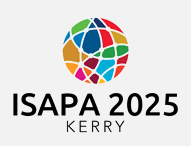Start Date
19-6-2025 12:00 PM
End Date
19-6-2025 1:00 PM
Abstract
Introduction Marginalized groups, including older adults and individuals with physical disabilities, are often excluded from opportunities to participate in physical activities due to barriers such as physical environmental constraints, social prejudice, and limited access to information (Rimmer & Rowland, 2008). Mobility limitations and the lack of suitable exercise programs hinder their health promotion and psychological well-being, creating a vicious cycle that increases the risk of chronic diseases and deepens social isolation (WHO, 2021). This study proposes a sports program leveraging digital technology to overcome these barriers and encourage sustainable participation in physical activities.
Methodology Using the literature analysis method, we analyzed the application of digital technology and edutech in physical education, research related to the participation of the underprivileged, news articles, and social discourse. Through this, we comprehensively reviewed ways for digital technology to expand the participation of the underprivileged in physical activity.
Results The study proposes four strategies to encourage the participation of marginalized groups in physical activities. As a result of study, we propose four programs to induce physical activities of the Nonparty-based body activities of the following four programs. First, exercise programs using YouTube and SNS can be used. It provides exercise-related information and motivates participation through online content and campaigns. Second, there is a need for a customized exercise program using digital devices. Participation in physical activity can be increased beyond time and space through interesting digital devices such as wearable devices, sensor-based games, and mobile applications. Third, you can try maker education related to physical activity. They develop creative problem-solving skills through the process of directly producing digital physical activity equipment and participating in physical activity using the equipment they have produced, and actively participate in physical activity. Fourth, it is possible to promote interaction between the underprivileged and strengthen social connectivity through the use of digital communities such as SNS.
Conclusions Through this study, we tried to suggest innovative ways that digital technology can expand the participation in physical activities of the underprivileged and contribute to their health promotion and social integration. In particular, it was confirmed that there is a possibility to effectively alleviate the physical and social barriers facing the underprivileged through a customized approach and interaction-based participation strategy using digital technology. In addition, based on this, it can be used as practical basic data for promoting the participation in physical activities and sports welfare of the underprivileged.
Recommended Citation
Cho, Gunsang Prof.; Kim, Jaehwa Prof.; and Lee, Hyunsu Prof., "Proposed Digital-Based, Customized Sports Program for the Underprivileged" (2025). International Symposium of Adapted Physical Activity and International Symposium on Physical Activity and Visual Impairment and Deafblindness. 45.
https://sword.cit.ie/isapa/2025/day4/45
Proposed Digital-Based, Customized Sports Program for the Underprivileged
Introduction Marginalized groups, including older adults and individuals with physical disabilities, are often excluded from opportunities to participate in physical activities due to barriers such as physical environmental constraints, social prejudice, and limited access to information (Rimmer & Rowland, 2008). Mobility limitations and the lack of suitable exercise programs hinder their health promotion and psychological well-being, creating a vicious cycle that increases the risk of chronic diseases and deepens social isolation (WHO, 2021). This study proposes a sports program leveraging digital technology to overcome these barriers and encourage sustainable participation in physical activities.
Methodology Using the literature analysis method, we analyzed the application of digital technology and edutech in physical education, research related to the participation of the underprivileged, news articles, and social discourse. Through this, we comprehensively reviewed ways for digital technology to expand the participation of the underprivileged in physical activity.
Results The study proposes four strategies to encourage the participation of marginalized groups in physical activities. As a result of study, we propose four programs to induce physical activities of the Nonparty-based body activities of the following four programs. First, exercise programs using YouTube and SNS can be used. It provides exercise-related information and motivates participation through online content and campaigns. Second, there is a need for a customized exercise program using digital devices. Participation in physical activity can be increased beyond time and space through interesting digital devices such as wearable devices, sensor-based games, and mobile applications. Third, you can try maker education related to physical activity. They develop creative problem-solving skills through the process of directly producing digital physical activity equipment and participating in physical activity using the equipment they have produced, and actively participate in physical activity. Fourth, it is possible to promote interaction between the underprivileged and strengthen social connectivity through the use of digital communities such as SNS.
Conclusions Through this study, we tried to suggest innovative ways that digital technology can expand the participation in physical activities of the underprivileged and contribute to their health promotion and social integration. In particular, it was confirmed that there is a possibility to effectively alleviate the physical and social barriers facing the underprivileged through a customized approach and interaction-based participation strategy using digital technology. In addition, based on this, it can be used as practical basic data for promoting the participation in physical activities and sports welfare of the underprivileged.


